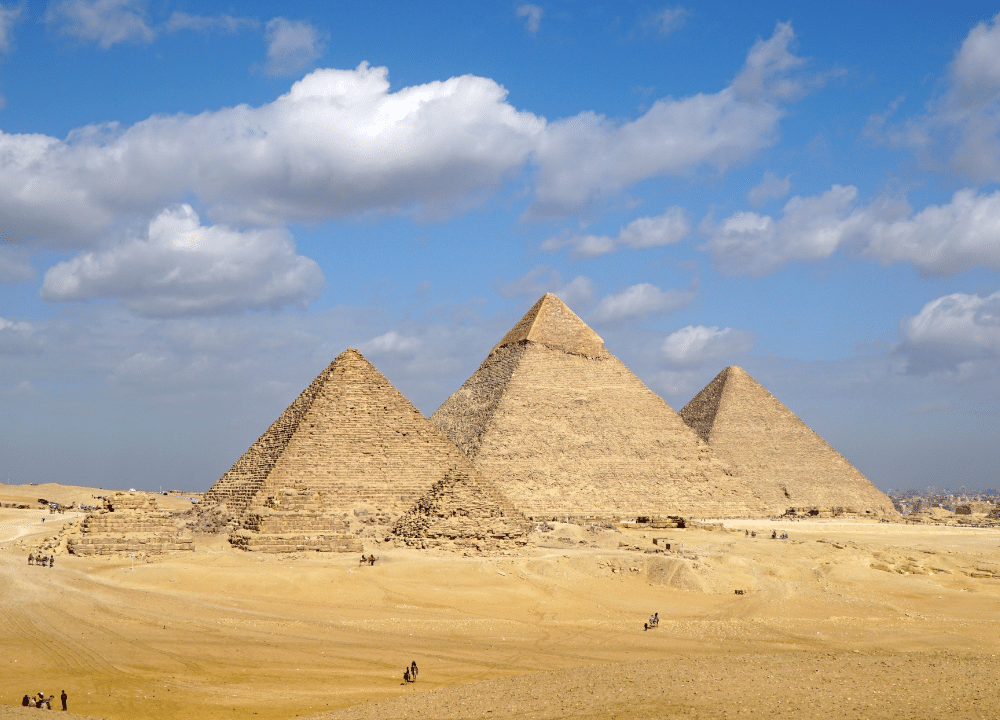When pre-planning a funeral for yourself or in immediate need for a loved one, options for burial are a big decision. Although in-ground burials are more traditional, above-ground burials are gaining popularity due to the combination of practicality, renewed cultural relevance, and in emotional significance. Above-ground burial may seem like an oxymoron if you are unfamiliar with the practice. The words are self-descriptive – the deceased is entombed in a mausoleum, crypt, or columbarium above ground. These legacy burial options have rich histories with deep significance in the cultures that popularized them.
Historical Roots of Above-Ground Burials
Mausoleums are generally memorials for individuals or families and can be private or semi-private, indoors or outdoors. Traditionally, crypts have been used to hold the remains of clergy or nobility. Access to them is usually restricted or highly controlled when they are open for religious ceremonies.
The origin of above-ground interment dates back thousands of years, beginning with ancient civilizations that sought to honor and protect their deceased. Working primarily within natural caves, humans began carving out facades and burial chambers on the sides of cliffs.
These simple cave tombs evolved into the elaborately built and intricately decorated structures we know today as mausoleums. They have long been used to immortalize deceased influential figures throughout history. The architecture of mausoleums showcases their wealth and importance while memorializing their legacy. From Egypt and Rome to modern mausoleums, above-ground burials have allowed both ancient and modern societies a way to honor their dead.
The History of Mausoleums
Pyramids of Egypt
Dating from c. 3000 BCE, the Pyramids of Egypt are some of the most well-known – and recognizable — above-ground burials. Although there are many pyramids in Egypt, the trio on the Giza plateau (c. 2575–c. 2465 BCE) are the most famous. These pyramids contain not only the remains of pharaohs, but also everything they would need to become gods in the afterlife in accordance with the Egyptian’s religious beliefs.
Mausoleum of Halicarnassus
Regarded as one of the Seven Wonders of the Ancient World, the Mausoleum of Halikarnassos was built for Mausolus, the ruler of Caria c. 353 BCE, by Queen Artemisia of Caria. This magnificent, elaborate tomb is so impressive that the word mausoleum originates from this structure and has been used to describe this type of above-ground tomb ever since.
Taj Mahal
The iconic Taj Mahal in Agra, India, was commissioned in 1632 by Mughal Emperor Shah Jahan in memory of his beloved wife, Mumtaz Mahal. It also holds the remains of Shah Jahan himself. One of the best examples of Mughal architecture, this grand mausoleum incorporates Persian, Islamic, and Indian architectural traditions.
The History of Crypts
Vatican Grottoes
Located deep beneath St. Peter’s Basilica in Vatican City, the Vatican Grottoes, are the famous final resting place of popes, royals, and historical figures. These crypts date back to the 4th century, constructed over what was believed to be the tomb of Saint Peter, one of Jesus Christ’s apostles and the first pope.
Imperial Crypt Kapuzinergruft
The Imperial Crypt, known as the Kapuzinergruft, is located beneath the Capuchin Church in Vienna, Austria. Established in 1618 by Empress Anna of Tyrol, the crypt has been the principal burial site of the House of Habsburg for more than 400 years. It holds the remains of 149 dynasty members, including emperors, empresses, and royalty from the Austrian Empire and Holy Roman Empire.
Pantheon
The final resting place for dignitaries of the empire and philosophers of the enlightenment, as well as writers, scientists, and resistance fighters, the Pantheon Crypt is located in the heart of the Sainte-Genevieve mountain in Paris, France. The Crypt was built between 1764 and 1790 from designs by Jacques-Germain Soufflot at the behest of King Louis XV of France.
Just like the ancient cave graves evolved into elaborate mausoleums and crypts, they have transitioned from massive structures for rulers and elites to more accessible options for families seeking dignified, long-lasting places of rest and memorialization. Modern mausoleums and columbariums offer enduring alternatives to traditional in-ground interment, preserving a time-honored practice while adapting to contemporary needs.
Health and Sanitation
Traditionally regulated to urban peripheries, as cities expanded, overcrowded cemeteries led to sanitation issues. Above-ground interment played a crucial role in addressing public health concerns. Mausoleums provided a hygienic solution, especially in areas with high water tables where traditional interments posed contamination risks. By elevating the resting place of the deceased, communities reduced health hazards while maintaining a respectful and secure environment for loved ones.
Cultural Significance of Mausoleums and Crypts
Throughout history, mausoleums and crypts have held profound religious and cultural significance. In Christianity, saints and revered figures were often entombed within a church crypt, reinforcing the belief in eternal rest. Family mausoleums not only honored the deceased but reflected their wealth and station in society.
In Islam and Hinduism, mausoleums are often used to honor and remember religious figures. The preference for entombment over in-ground interment reflects a universal desire for preservation, reverence, and a connection to faith and heritage.
Architectural Beauty and Legacy of Mausoleums
Many cemeteries are tourist destinations, and you can see why when you walk through them. They are filled with mausoleums that stand as architectural monuments with a sense of legacy through a grand and durable structure. Designed to make a statement for generations as part of a family’s estate, they often feature intricate stonework, stained glass, and classical elements that elevate their surroundings. Each one is a distinctive expression of the family or individual they commemorate.
Protection from Natural Elements
Above-ground internment options such as mausoleums and crypts offer superior protection from events such as flooding, erosion, and shifting soil, to name just a few. An example of this is the famous above-ground cemeteries of New Orleans, a city well-known for being at or below sea level. Due to this extremely high water table, above-ground tombs became necessary to prevent caskets — and sometimes bodies — from surfacing during heavy rains and floods.
Environmental Benefits of Above-Ground Burials
Mausoleums and above-ground crypts are exceptionally resilient to floods, soil erosion and movement, and a range of other issues. The above-ground cemeteries in New Orleans offer the ideal example. New Orleans is famous for having its land at or below sea level. Because of this, during heavy rains and floods, above-ground tombs had to be constructed to prevent caskets and bodies from unearthing and washing away.
Modern Cemetery Planning
When incorporating sustainability into modern cemetery planning, there are many reasons above-ground interments are the way to go. Mausoleums and columbariums do not require the large swathes of land needed for in-ground plots, preserving the natural beauty of the area while also saving space. The amount of land used for soil excavation is minimal, meaning the effect on the ecosystem is limited. Most importantly, less maintenance means fewer resources are needed, making them more sustainable.
A Personalized Resting Place
Above-ground burials allow families to create a deeply personal and lasting tribute to their loved ones. With options ranging from private crypts to family-owned mausoleums, they have greater control over design, customization, and legacy preservation. Whether through personalized engravings, architectural elements, or dedicated spaces, families can establish a meaningful, enduring tribute that reflects their heritage and values.
Here are some ways families can personalize above-ground burials:
- Crypt styles: choose from single, side-by-side, true companion, or Westminster family crypts.
- Memorialization: inscriptions on the crypt plate or mausoleum that include the name of the deceased and other messages. Some families also add personalized markers and religious figures.
- Personalization: customize the mausoleum with sculptures and decorative details that tell the story of the deceased.
As a family-owned and operated all-in-one facility, we are committed to providing dignified, enduring internment solutions that honor traditional and contemporary needs. Families can ensure a lasting, respectful, and environmentally conscious resting place for their loved ones by choosing above-ground interment.


